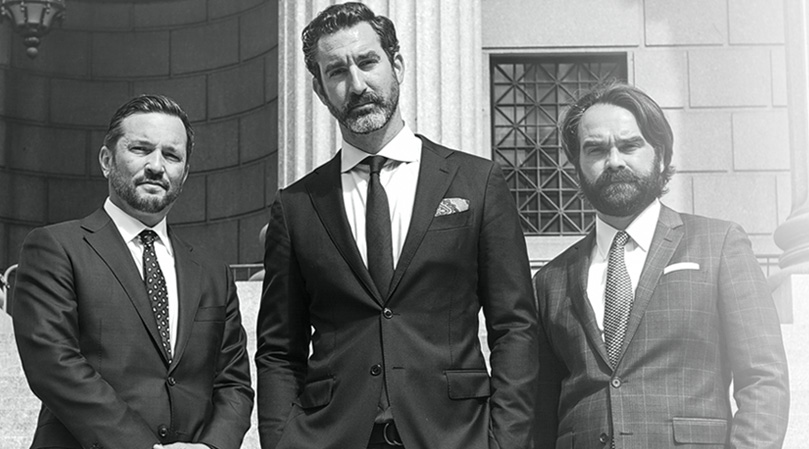Cannibal Cop And Conspiracy

The arrest and conviction of New York City Police Officer Gilberto Valle became an international story. Mr. Valle was accused by the federal government of conspiring with others to kidnap women so he and his co-conspirators can do all sorts of depraved things to them. The New York tabloids had a lot of fun with this case. Indeed, the allegations are creepy to say the least. Despite this, legal insiders found this case interesting because the facts presented an interesting dynamic within the context of American conspiracy laws. Quite frankly, I was surprised the U.S. Attorney’s Office brought this case in the first place and I am glad the judge threw out the jury’s verdict. It would have been better if the jury had rendered an acquittal instead, but I suppose when dealing with the U.S. Attorney’s Office, beggars can’t be choosers. Rather than focusing on the bizarre facts of this case (for which there is plenty of media attention already), this blog post is intended to focus on the bizarre fact that the U.S. Attorney’s Office brought this case in the first place.
There are two general points about conspiracy that must be understood in analyzing this particular case. First, the concept of conspiracy can be complicated for a person with no legal training to conceptualize. Second, conspiracy is such a powerful tool for a prosecutor, that it almost circumvents the legal protections afforded by the U.S. Constitution. A person is guilty of conspiracy when he makes an agreement to do something unlawful and someone within that agreement engages in at least one ‘overt act.’ The big point here (and the one that most people miss) is that when a person makes this agreement, the agreement itself is the crime. Therefore, it makes no difference whether the people within this agreement were close to ever actually committing the unlawful act for which the conspiracy existed. For example, if Bill and Joe make an agreement where they plan to kill Steve, then Bill and Joe are immediately guilty of conspiracy to commit murder as soon as one of them does something in furtherance of the conspiracy. This act in furtherance of the conspiracy need not be itself illegal. For example, suppose Bill buys a shovel so that he and Joe can then bury Steve after they kill him. That ‘overt act’ is enough to convict both Bill and Joe of conspiracy. It makes absolutely no difference if they take any additional steps to kill Steve or do anything else for that matter. They are already guilty of conspiracy once that agreement was reached and once someone commits any overt act. The reason this is such a powerful tool for a prosecutor is because the sanctions in this context are often the same as if they actually committed the murder. So in many instances, even if the government fails to prove that a crime was actually committed, the person can still be convicted and receive the same sentence for simply conspiring to commit that crime.
The reason conspiracy can be so complicated is because it is by definition a thought crime. There is, as of yet anyway, no tool that allows a prosecutor, a judge, or a juror to look inside someone’s head and see his true intentions. They can only look at his actions and make an educated guess based on whether they believe the actions are consistent with malicious intent. The law, however, does not punish evil thoughts. Even with conspiracy, there must be the specific intent to actually commit a crime. In the previous hypothetical, for example, suppose Bill and Joe were just letting off some steam because Steve annoys them and they only bought the shovel as a joke. Moreover, suppose killing Steve is just a fantasy and neither actually ever intended to carry out the murder. In that context, the two never agreed to actually kill Steve. On the other hand, suppose Bill stands to inherit Steve’s entire fortune; suppose Joe is the beneficiary in Steve’s insurance policy; and suppose in addition to buying a shovel, Joe and Bill also bought a gun and they talked Steve into going camping with them somewhere in the middle of nowhere.
In a conspiracy case, the jury is asked to decipher whether an agreement was ever reached and whether someone committed an overt act in furtherance of that agreement. But more importantly, the jury is asked to determine whether the people within the agreement actually intended to commit the crime. The point of conspiracy is you want to catch the perpetrators before they commit the actual crime, but you also want them to be punished for wanting to commit the crime in the first place.
That brings us to the case of the cannibal cop. In taking the extraordinary step of throwing out the jury’s verdict, Judge Gardephe makes three key points that suggest that no rational trier of this case can conclude that Mr. Valle is guilty. First, he writes that the co-conspirators lied so much about who they were and what they did that they were unlikely to have ever even tried to turn this fantasy into reality. For example, Mr. Valle told his co-conspirators (whom he never met in person) that he lived in a cabin in the middle of Pennsylvania and that he was building a soundproof basement where he can keep a ‘human-sized oven.’ This, among many other lies, wasn’t true. Second, the federal government conceded that the majority of the conversations that Mr. Valle had with other people on this website were fantasy, but that his conversations with his co-conspirators were somehow different. However, the government, the judge wrote, failed to adequately distinguish the real agreements to kidnap these women from the fantastical agreements. And third, the co-conspirators apparently made numerous actual dates for when to commit these kidnappings. According to the judge, however, whenever these dates would come and go, there was no inquiry as whether the kidnappings happened and if not, why not. Apparently they just picked a new pretend date to commit another fake kidnapping.
As stated above, if you want to judge whether Gilberto Valle is actually guilty of conspiring to kidnap women, you need to get into his head (have fun!). In my opinion though, there just isn’t enough evidence to suggest that these people actually intended to commit any crime. The government is appealing. Let’s see what the Second Circuit does.

Request Your Free Consultation
Fields Marked With An “ * ” Are Required
"*" indicates required fields
The Woolworth Building
233 Broadway
Suite 701
New York, NY 10279

